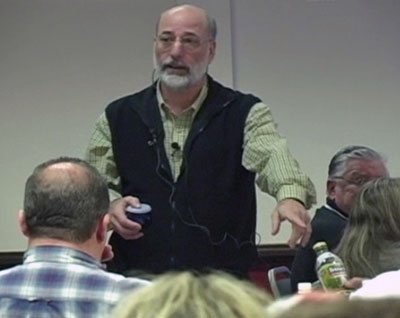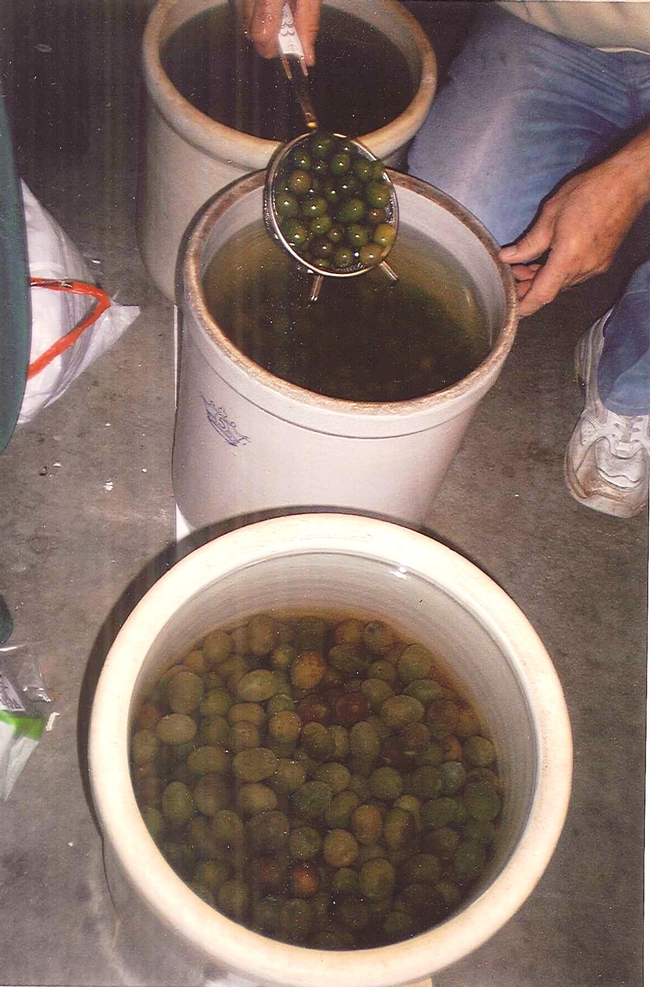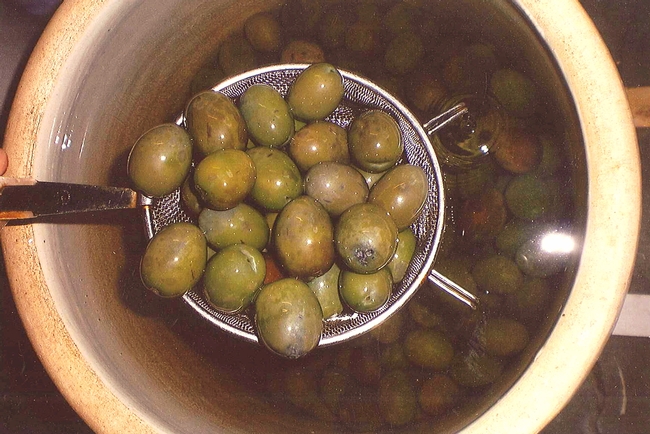Posts Tagged: Olives
Olive Tree: Beauty and Bane
Do you have an olive tree, Olea europaea, in your landscape? We do - a 'Kalamata' olive. It's a beautiful evergreen tree that, once established, requires very little water. The pollen can be highly allergenic. Ten years ago, we brought it home from the Vacaville Home and Garden Show. It was a spindly little stick, not more than ten inches tall from root ball to tip. We were excited at the prospect of harvesting our own olives and curing them with a method my husband read about that used only water and salt instead of lye. Let me say, LOTS of water and salt. We planted it in the back portion of our vegetable garden, about two feet from the fence line. No, I was not a master gardener ten years ago, or I would have known to plant it farther from the fence.
Over the years, it's grown to about 20+ feet tall. Since then, that vegetable garden has been relocated to accommodate a swimming pool, the size of which was dictated by the location of the olive tree. My husband and I are out there pruning the tree a few times a year to keep it from hanging over the neighbor's yard. In the spring, the yellow pollen from the tree coats the patio and chairs in a thick yellow dust. From now until January, I am constantly picking up dropped olives to alleviate staining of the concrete. And the olives we were going to cure? Haven't eaten a single one. On the upside, the tree provides a terrific area of shade to sit under, and lends a distinctively Mediterranean atmosphere to the backyard. It is a beautiful tree.
So what have I learned from this tree? Two feet between a tree and a fence is nowhere near enough. Curing olives takes time and patience. Even though olive trees grow well in Solano County, don't plant them near a pool!
Don't put a pool next to an olive tree.
Local Olives
Admittedly, this blog entry leans more towards food than cultivation, but hey, isn’t food one of the main reasons why we grow edibles in addition to edibles just being plain beautiful?? I believe our local readers will be delighted to know that we have a number of knowledgeable local olive growers, and, in turn, olive oil producers here in Solano County. This blog entry will feature one such local source—Il Fiorello Olive Oil Company located at 2625 Mankas Corner in Suisun Valley.
Il Fiorello (Italian for “little flower,” which describes the olive flower itself) is owned by Mark and Ann Sievers. I had the pleasure and privilege of attending a marvelous Chocolate and Olive Oil tasting event at Il Fiorello recently. This blog entry will focus exclusively on the olive aspect of the event (rather than chocolate), as olives can be cultivated locally.
During the event, Mark gave an informative lecture, filled with fun facts about olives:
- Most Olives are grown within 200 miles of the Mediterranean Sea.
- There are over 800 varieties of olives.
- Different olives produce different flavored olive oils.
- Greeks use more olive oil than just about anyone.
- There are approximately 800 olive mills in Sicily alone; contrast that with just 53 mills in the United States.
- California is the center for the olive oil industry in the United States.
- Oldest olive tree is in Sicily—approximately 2,600 years old.
Mark explained that when tasting olive oil, you should first use your nose to smell the oil and then taste for depth (fruitiness/bitterness, pungency (e.g., how peppery is it?), and balance). Pungency can be described by the number of coughs you experience as a result of tasting an oil. One of the many varieties of olives that the Sievers grow, is called a Lecchino, which is delicate in flavor and pairs well with vegetables such as spinach. Another variety that the Sievers grow is the Frantoio, which produces a more robust olive oil.
When caring for olive trees, Mark advised that one must be very careful to prune the trees because olives grow on 1-year old wood. Apparently, olive trees are fairly pest-resistant overall, having only one real pest—the olive fly (http://ipm.ucdavis.edu/PMG/PESTNOTES/pn74112.html ) which, according to Mark, is pretty easy to control. One healthy tree can produce approximately 40 pounds of olives which will render 2 quarts of olive oil. Mark said that olives start to deteriorate the moment they are harvested (helpful tip for those of you who have olive trees and harvest from them). Olives must be milled within 24 hours of harvest to achieve a superior oil.
Mark advised that olive oil, if kept properly (no heat, no light, no oxygen) in a cool, dark place, will last up to 3 years. He warned that most of the olive oil on supermarket shelves is rancid (I heard the same when attending an olive workshop presented at UC Davis this year) and that the only way a consumer knows to tell the difference, is to have developed a palate for good olive oil.
So if you love olives but do not have your own olive trees, look no further than to our local sources.
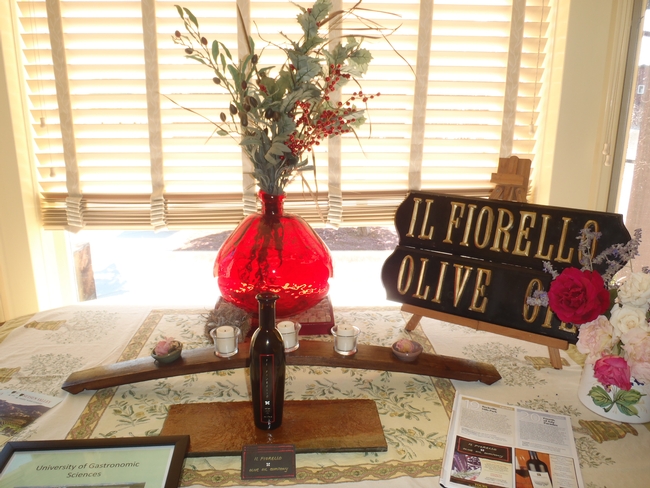
Photos by Betty Homer

P9021284
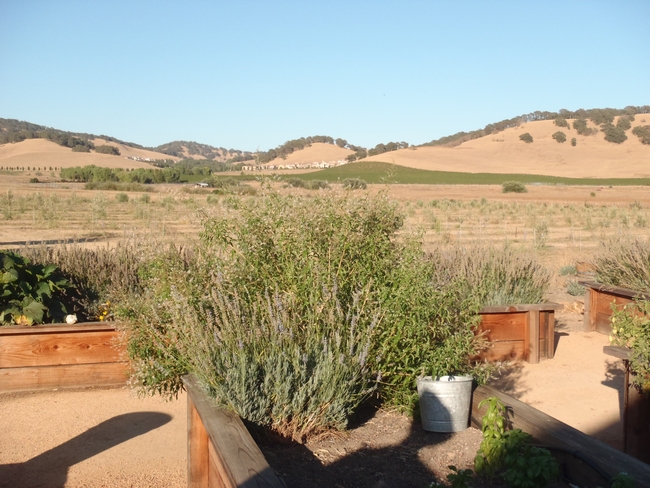
P9021287
Florida citrus growers explore olive opportunities
Citrus growers in Florida, who are struggling with the devastating citrus disease huanglongbing, are considering growing olives, according to a report on the Tampa, Fla., ABC news affiliate.
Reporter Ryan Raiche covered a meeting at the University of Florida Citrus Research and Extension Center where UC Cooperative Extension farm advisor Paul Vossen introduced growers to olive production and marketing and offered citrus growers the opportunity to taste a variety of olives and olive oils.
“This is not a slam dunk, because this is a really peculiar crop that needs really specific things in order to flower and fruit,” Vossen said.
Olives thrive in a dry climate where it’s not too hot and not too cold. Vossen said rain during bloom season could wipe out the crop.
Ojai man appointed to Regional Water Quality Control Board
Ventura County Star
Gov. Jerry Brown has appointed Ventura County UC Cooperative Extension director emeritus Larry Yee to the Los Angeles Regional Water Quality Control Board.
The board oversees water quality issues and has the power to fine polluters.
Yee worked for the UC Cooperative Extension from 1975 to 2008 and was the Ventura County director from 1986 to 2008. He also was director of the UC Hansen Trust, which was set up to promote agricultural research and education.
Italian Olives
This fall the search for olives began. As my husband and I drove around Solano County, we noticed the barren olive trees. Olives are like many other fruits, they have good production years and not so good years. The unpredictable weather this past spring most likely affected fruit set.
Curing olives is a yearly Italian heritage tradition at our house. My husband’s grandfather and mother cured olives, so the family would have olives to eat and cook with during the holidays. Before meeting my husband, I thought olives were a table decoration, then learned they were a whole food and could be a WHOLE meal. In Italy, olives are found in barrels at the front door of grocery stores and also peddled on the streets wrapped in newspaper shaped into a cone.
In the past, we have picked olives on the property of our friends or family. Last year, we bought them in Oroville and this year they came from Corning. The olives this year are beautiful, large and shiny green. The type of olive my husband cures is called a Sevillano olive (Sicillian-style). Olives on the tree, at any stage of ripeness, are very bitter and inedible because of the oleuropein that is abundant in its flesh. The curing process removes the bitterness. There is quite a science to curing olives and definitely a time commitment. Once we obtain olives, the next 7 to 10 days are about preparing them to be eatable. When the curing process ends, they are bottled and pressured canned. In the past, he has seasoned them with fresh rosemary, garlic cloves, celery, red pepper flakes and even added vinegar. There are many ways to change the flavor, but our preference is leaving them plain in salted water.
There is great information available on the web from UC Davis, on safe methods for curing olives (Publication #8267). It takes a lot of time and is a lot of work, but we know our holidays will be celebrated again this year with delicious, home-cured Italian olives; a labor of love!
Olive growers don't appreciate U.S. support of Morrocon farmers
To ease poverty and stimulate economic growth, the U.S. government has pledged $301 million to help Morrocon farmers rehabilitate existing olive trees and expand olive, almond and fig production. However, San Joaquin farmers say the move undercuts the struggling local industry, according to an article in the Porterville Recorder.
“It’s ludicrous,” said farmer Rod Burkett. “We’re a small industry. We have less than 24,000 acres (of olive trees) in the state. [Morocco] has more than 1 million acres. That gives them a real advantage. Now [the U.S. government] is taking my tax money and giving it to those people so they can make their trees more productive.”
Recorder staff writer Alex Schultz used UC Cooperative Extension figures to illustrate the hardships California olive growers are facing this year. Production is so low - down 86 percent from last year - that harvesting any fruit may not be worth it. Meanwhile, it costs $1,400 each season to maintain an acre of olive trees.

olives


